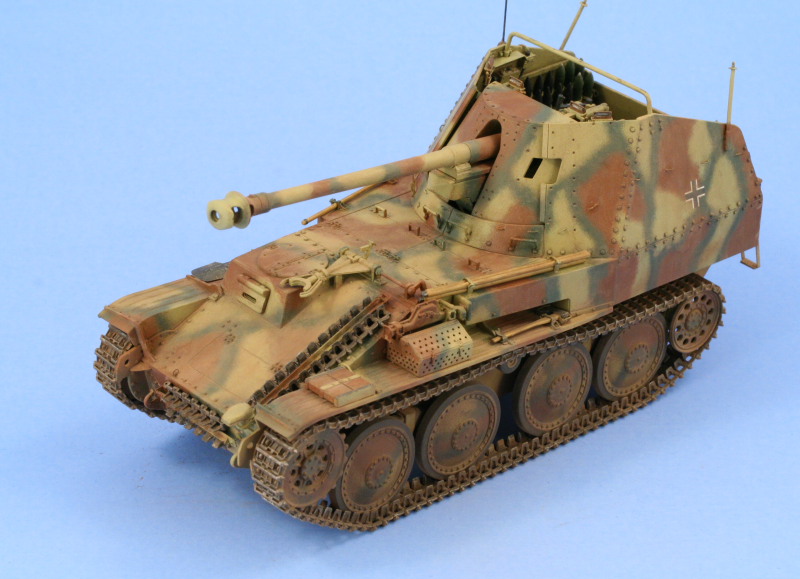I removed the masking tape on the interior compartment and was pleased to see that most of it had survived intact. Only a little bit of touch-up was needed on the rain guard over the radio and to a couple of the ready ammo rounds.
For the exterior, I did the same thing, touching up some spots here and there that the work with the AB had overlooked. I also cleaned up most of the remaining over spray in the camo patterns by dry-brushing the corresponding colors to blend them back in. I also installed the main support bar for the canvas foul weather cover and then turned to the suspension.
In preparation for installing the road wheels, I laid out the sets and mixed/matched them in order to get a good set for each side that more or less corresponded to the scheme patter on that side. The areas under the fenders and the lower hull were treated with some dry brushed Burnt Umber as a foundation for weathering and the same was done to all the road wheels. The sprockets and idlers were also dry brushed with Steel on their teeth and track contact points before the Burnt Umber was applied. The contrast is somewhat strong at this point but further weathering in later stages will mute this somewhat and blend it all back in together. The road wheels and idlers were glued in place and the sprockets, due to the insert grommets, were pressed onto their mount arms and are able to turn freely.

The paint will get a chance to cure for a week or so before next weekend rolls around. In the course of the week I'll likely start in on the MK tracks just because they're the perfect thing to work on in front of the TV to break up the tedium of their assembly.























